
Wetenschap
Apparaat stuurt sperma tegen de stroom in om onvruchtbaarheid te helpen
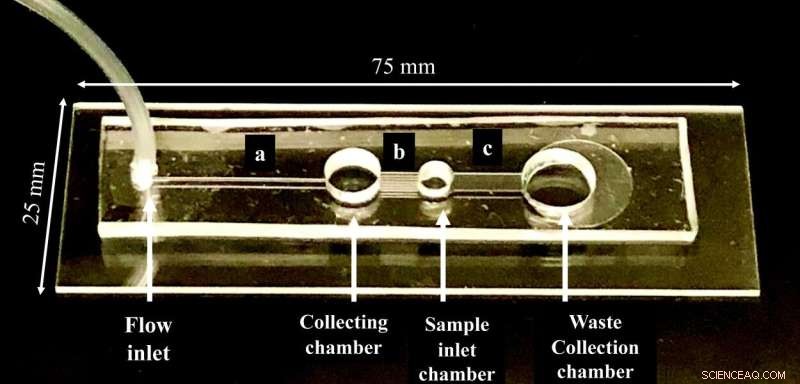
De microfluïdische chip bestaat uit vier cilindrische kamers die zijn verbonden via microkanalen:de vloeistofinlaatkamer, verzamelkamer, monsterinlaatkamer en afvalverzamelkamer. Krediet:Florida Atlantic University
Het vrouwelijke geslachtsorgaan kan een vijandige omgeving zijn voor conceptie. Van de ongeveer 100 miljoen zaadcellen bereiken er slechts een paar honderd de eileiders. Geleid door een gerichte beweging die rheotaxis wordt genoemd, zwemmen zaadcellen tegen de stroom van het baarmoederhalsslijm in om het ei te bereiken voor bevruchting. Deze reis is echter nog belangrijker bij het overwegen van onvruchtbaarheid. De beweeglijkheid van het sperma - het vermogen om op de juiste manier te zwemmen - is de sleutel.
Door gebruik te maken van dit natuurlijke rheotaxis-gedrag van sperma, hebben onderzoekers van de Florida Atlantic University's College of Engineering and Computer Science een microfluïdische chip ontwikkeld voor het sorteren van sperma die snel, goedkoop, eenvoudig te bedienen is en gezond sperma efficiënt isoleert rechtstreeks uit sperma. Belangrijk is dat het moeiteloos gesorteerde zaadcellen uit de verzamelkamer verzamelt en besmetting door vervormde of dode zaadcellen minimaliseert.
Geassisteerde voortplantingstechnieken zoals in-vitrofertilisatie (IVF), intra-uteriene inseminatie en intracytoplasmatische sperma-injectie vereisen allemaal gezonde zaadcellen voor een succesvol resultaat. De huidige centrifugatiemethoden voor het sorteren van sperma vereisen meerdere stappen, meerdere soorten apparatuur en het duurt ongeveer twee uur om zaadcellen te isoleren. Deze methoden beschadigen sperma tijdens de verwerking en veroorzaken aanzienlijke DNA-fragmentatie en oxidatieve stress.
Resultaten van de studie, gepubliceerd in het tijdschrift The Analyst van de Royal Society of Chemistry, toonde aan dat zaadcellen geïsoleerd uit de verzamelkamer in deze microfluïdische chip een significant hogere beweeglijkheid (bijna 100 procent), een hoger aantal morfologisch normale cellen en aanzienlijk lagere DNA-fragmentatie vertoonden, wat een cruciale parameter is voor de bevruchtingsproces. Daarnaast levert de ontwikkelde chip meer dan voldoende cellen die nodig zijn voor een succesvolle intracytoplasmatische sperma-injectie vanwege de hoeveelheid en kwaliteit van de met behulp van de chip geïsoleerde spermacellen.
"Het bedienen van onze chip is heel eenvoudig. Zodra het sperma in de monsterinlaatkamer is geladen, beginnen de competente spermacellen tegen de vloeistofstroom in te bewegen naar de verzamelkamer van waaruit ze gemakkelijk kunnen worden verzameld", zegt Waseem Asghar, Ph.D. , senior auteur, universitair hoofddocent bij de afdeling Elektrotechniek en Computerwetenschappen van de FAU, en lid van het FAU Institute for Human Health and Disease Intervention (I-Health) en het FAU Institute for Sensing and Embedded Network Systems Engineering (I-SENSE) . "Bovendien biedt deze chip een operationeel voordeel in één stap, één uur, dat een operator met minimale training kan gebruiken."
The study also validates that rheotaxis selects the healthy, motile, and higher velocity sperm cells for the fertilization process.
"The assembly of the microfluidic chip is low-cost, and the reagents used in the chip to separate sperm cells are only a few milliliters, therefore, the commercial cost of the chip would be less than $5," said Asghar. "Moreover, this technology will considerably reduce the economic burden of fertility implementations and both the chip and the sperm cells isolated from it offer great clinical significance and applicability."
The microfluidic chip consists of four cylindrical chambers that are connected through the microchannels. The four chambers are the fluid inlet chamber, collecting chamber, sample inlet chamber, and waste collection chamber. The channel between the collecting chamber and sample inlet contains microgrooves to guide the sperm cells in addition to the fluid flow for the rheotaxis movement of the sperm cells towards the collecting chamber.
The shear stress inside the device is generated by fluid flow using a syringe pump. A raw semen sample is then added to the sample inlet chamber from where functional sperm cells will swim towards the collecting chamber, effectively separating themselves from dead and immotile sperm.
"Conventional centrifugation often compromises the integrity of sperm cells. This research study demonstrates that the microfluidic chip developed by professor Asghar and his colleagues eliminates this issue," said Stella Batalama, Ph.D., dean, College of Engineering and Computer Science. "This novel technology offers a platform where the sperm cells experience different shear stress in different parts of the chip, which facilitates the isolation of competent sperm cells without impacting their integrity."
In the United States, an estimated 15 percent of couples have trouble conceiving. Globally, approximately 48.5 million couples experience infertility. According to the U.S. Centers for Disease Control and Prevention, 12 percent of women of childbearing age have used an infertility service. All treatment costs for infertility can range from $5,000 to $73,000. The average patient goes through two IVF cycles, bringing the total cost of this procedure, including medications, between $40,000 and $60,000. An estimated 85 percent of IVF costs are often paid out-of- pocket. + Verder verkennen
Survival of the fittest sperm:How new technology may help infertile couples
 Hoe zuurstof uit vloeibare lucht te scheiden
Hoe zuurstof uit vloeibare lucht te scheiden  Bio-sensing contactlens kan op een dag bloedglucose meten, andere lichaamsfuncties
Bio-sensing contactlens kan op een dag bloedglucose meten, andere lichaamsfuncties Reactieresultaten voorspellen:machines leren scheikunde
Reactieresultaten voorspellen:machines leren scheikunde Nieuw inzicht in celmembranen kan het testen en ontwerpen van geneesmiddelen verbeteren
Nieuw inzicht in celmembranen kan het testen en ontwerpen van geneesmiddelen verbeteren Onderzoekers ontwikkelen nieuwe chip voor superieure forensische detectie van bloedresten
Onderzoekers ontwikkelen nieuwe chip voor superieure forensische detectie van bloedresten
 Deze klimaatactivisten willen dat je de hoop opgeeft
Deze klimaatactivisten willen dat je de hoop opgeeft Waar bestaat de mantel van de aarde uit?
Waar bestaat de mantel van de aarde uit?  Wetenschappers ontwikkelen nieuwe methode om herstel ozonlaag te beoordelen
Wetenschappers ontwikkelen nieuwe methode om herstel ozonlaag te beoordelen Onzekerheid in emissieramingen in de kijker
Onzekerheid in emissieramingen in de kijker Herstel van aangetaste graslanden kan de mitigatie van klimaatverandering en belangrijke ecosysteemdiensten ten goede komen
Herstel van aangetaste graslanden kan de mitigatie van klimaatverandering en belangrijke ecosysteemdiensten ten goede komen
Hoofdlijnen
- Science Fair-projecten met nagellak
- Definitie van biologische opvolging
- Biologisch onderzoek suggereert dat voeding van vaders vóór seks kan bijdragen aan de gezondheid van de baby
- Videobeelden bieden eerste gedetailleerde observatie van orka's die op witte haaien jagen in Zuid-Afrika
- Microben die gaatjes veroorzaken, kunnen superorganismen vormen die kunnen kruipen en zich op de tanden kunnen verspreiden
- Glycolyse aan kinderen leren
- Verschillen en overeenkomsten tussen Unicellular & Cellular
- Hoe communiceren bacteriën?
- Anatomy & Physiology Project Ideeën
- Bimetaalkatalysator helpt bij het synthetiseren van afstembare imines en secundaire aminen

- Onderzoek toont aan dat keramiek kan vervormen als metalen als het onder een elektrisch veld wordt gesinterd
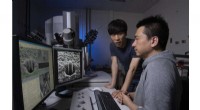
- Loden leidingen veilig maken
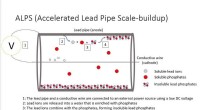
- OLED's worden helderder en duurzamer
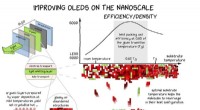
- Chirurgisch materiaal op basis van eierschalen voor schedelverwondingen
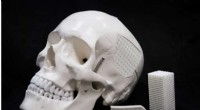
 Kristallisatie van colloïden bevestigd aan de olie-waterinterface die reageert op laserverlichting
Kristallisatie van colloïden bevestigd aan de olie-waterinterface die reageert op laserverlichting Vergeet 5G:oprichter wil Boost Mobile terug om de prijzen voor budgetklanten laag te houden
Vergeet 5G:oprichter wil Boost Mobile terug om de prijzen voor budgetklanten laag te houden Rifzand lost sneller op dan eerder gedacht, studie waarschuwt
Rifzand lost sneller op dan eerder gedacht, studie waarschuwt Wat dragen schimmels bij aan het ecosysteem?
Wat dragen schimmels bij aan het ecosysteem?  Frankrijk legt Google een boete op van $ 166 miljoen voor misbruik van advertentiedominantie
Frankrijk legt Google een boete op van $ 166 miljoen voor misbruik van advertentiedominantie Hoe een superverzadigde oplossing van kopersulfaat te maken
Hoe een superverzadigde oplossing van kopersulfaat te maken Nieuwe memristor verhoogt de nauwkeurigheid en efficiëntie voor neurale netwerken op atomaire schaal
Nieuwe memristor verhoogt de nauwkeurigheid en efficiëntie voor neurale netwerken op atomaire schaal Nieuwe versie van Earth-model legt gedetailleerde klimaatdynamiek vast
Nieuwe versie van Earth-model legt gedetailleerde klimaatdynamiek vast
- Elektronica
- Biologie
- Zonsverduistering
- Wiskunde
- French | Italian | Spanish | Portuguese | Swedish | German | Dutch | Danish | Norway |

-
Wetenschap © https://nl.scienceaq.com

